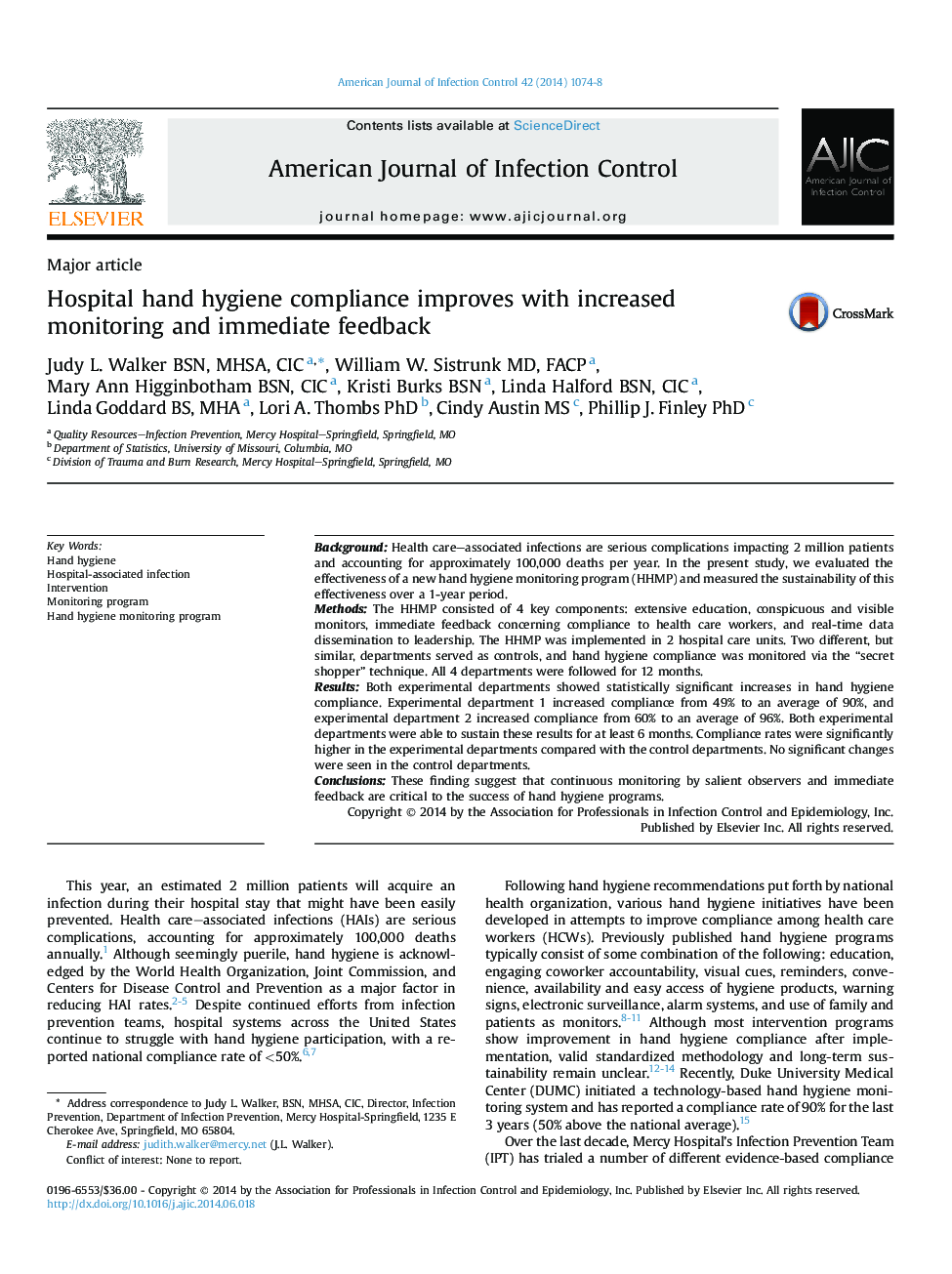| Article ID | Journal | Published Year | Pages | File Type |
|---|---|---|---|---|
| 2636896 | American Journal of Infection Control | 2014 | 5 Pages |
•Here we demonstrate that a novel hand hygiene monitoring program significantly increased hand hygiene compliance.•Increased hand hygiene compliance after program implementation was sustained for more than 6 months.•Continuous monitoring by salient observers and immediate feedback are imperative for a successful hand hygiene program.
BackgroundHealth care–associated infections are serious complications impacting 2 million patients and accounting for approximately 100,000 deaths per year. In the present study, we evaluated the effectiveness of a new hand hygiene monitoring program (HHMP) and measured the sustainability of this effectiveness over a 1-year period.MethodsThe HHMP consisted of 4 key components: extensive education, conspicuous and visible monitors, immediate feedback concerning compliance to health care workers, and real-time data dissemination to leadership. The HHMP was implemented in 2 hospital care units. Two different, but similar, departments served as controls, and hand hygiene compliance was monitored via the “secret shopper” technique. All 4 departments were followed for 12 months.ResultsBoth experimental departments showed statistically significant increases in hand hygiene compliance. Experimental department 1 increased compliance from 49% to an average of 90%, and experimental department 2 increased compliance from 60% to an average of 96%. Both experimental departments were able to sustain these results for at least 6 months. Compliance rates were significantly higher in the experimental departments compared with the control departments. No significant changes were seen in the control departments.ConclusionsThese finding suggest that continuous monitoring by salient observers and immediate feedback are critical to the success of hand hygiene programs.
